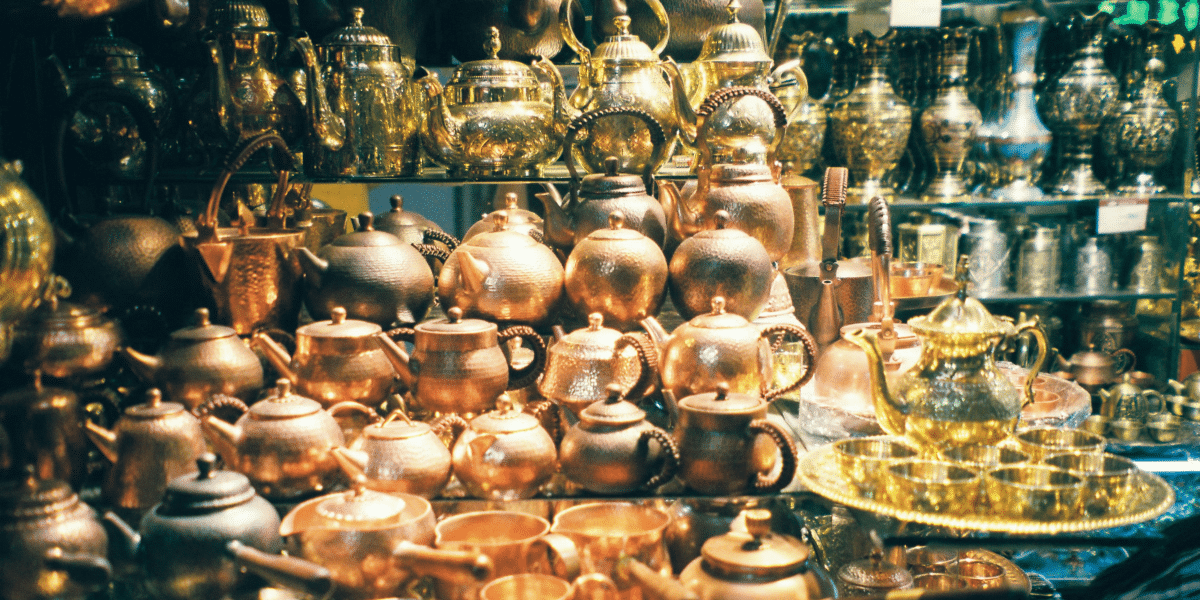The international metal market is a critical component of the global economy, influencing many sectors, from manufacturing to technology. As an intricate web of supply, demand, and regulatory influences, these markets demand attention from diverse stakeholders, including governments, corporations, and investors. Understanding the dynamics, including the key players, investment strategies, and the overarching impact of regulatory and sustainability issues, is vital for anyone engaged in this sector. Additionally, as described by Tennant Metals, practical insights from case studies and the employment of sophisticated analytical tools are critical in navigating the complexities and identifying opportunities in these markets.
Overview of Global Metal Markets
The global metal markets encompass a vast and complex network where commodities such as iron, copper, aluminum, and precious metals are traded. These markets are pivotal not only for the economies that heavily rely on them for industrial production but also for investors seeking to diversify their portfolios. Historically, metals trade has been a cornerstone of economic development, influencing everything from currency values to international relations.
Technological advancements, economic shifts, and geopolitical developments constantly reshape the landscape of these markets. The rise of digital trading platforms and the introduction of innovative mining technologies have significantly altered how metals are extracted and traded globally. Trade disputes or political unrest in key producing countries can also lead to volatility, affecting prices and supply chains worldwide.
Understanding these dynamics is crucial for stakeholders involved in the global economy, from policymakers and corporate executives to individual investors. The interplay between these factors dictates market behavior, presenting opportunities and challenges requiring strategic navigation.
Major Players and Market Dynamics
A few key countries and international corporations dominate the global landscape of metal markets. China, for instance, stands out as a significant player due to its massive consumption and production of metals, which positions it for influencing and reacting to global market trends. The presence of large mining companies, such as BHP and Rio Tinto, also plays a critical role in shaping the market dynamics. These entities not only manage vast resources but also possess the capability to adjust production levels, which can sway prices and availability in the market.
Emerging markets are becoming pivotal in the global metal industry. Nations such as Brazil, Russia, and India have been enhancing their production capabilities and, in turn, are beginning to exert more influence on international trade and pricing structures. This shift not only diversifies the geographic landscape of major players but also introduces new challenges and competition into the market.
Investment Strategies in Metal Markets
Navigating investments in the global metal markets requires a keen understanding of the cyclical nature of commodities and the specific factors driving the sector. Diversification across different types of metals, geographical regions, and stages of the production chain can help mitigate risks associated with price volatility and geopolitical uncertainties. Strategic investors often balance their holdings between stable, high-demand metals like aluminum and copper with more volatile options like rare earth metals, which may offer higher returns.
Anticipating future trends plays a crucial role in investment decision-making. As the global economy leans towards sustainable practices, the demand for metals in renewable energy technologies, such as lithium and cobalt, is expected to rise. This shift suggests the growing importance of staying ahead in understanding technological and market trends, enabling investors to make informed decisions about when to enter or exit specific market segments.
Regulatory and Sustainability Issues
Navigating the regulatory frameworks influencing the metal markets is essential for compliance and sustainable operations. Different regions worldwide impose varying standards and regulations that can significantly impact how metals are extracted, processed, and traded. For instance, the European Union’s stringent environmental laws require companies to adhere to low emission and waste production standards, influencing global practices. These regulations ensure a minimal footprint and push companies towards innovating cleaner and more efficient mining technologies.
Sustainability in metal production has become a central concern as stakeholders increasingly prioritize environmental impacts. The push towards reducing carbon footprints and ensuring that operations are environmentally sustainable can be seen in adopting practices such as recycling metals and employing renewable energy sources in mining operations.
Practical Insights: Case Studies
The fluctuating nature of the metal markets provides numerous learning opportunities through case studies. Observing how different companies react to sudden changes in market conditions, such as a spike in metal prices due to geopolitical tensions, offers valuable insights. These scenarios highlight the importance of adaptive strategies and the need for robust contingency planning. Analyzing these real-world examples equips market participants with the knowledge to foresee and mitigate potential risks associated with market fluctuations.
Analytical Tools and Resources
In metal markets, having access to the right tools and resources is vital for accurate market analysis and decision-making. Sophisticated software that offers real-time data and trend analysis enables traders and investors to make informed decisions. Additionally, publications and reports from credible sources provide depth and context, helping stakeholders understand the nuances of market forces and economic indicators. Staying updated with these tools and resources is crucial for maintaining a competitive edge in a market driven by information and timely insights.
Published By: Aize Perez














